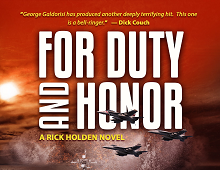
Writers want other writers – especially prominent authors – to blurb their books. Blurbs sell books and most writers – especially new authors – crave them. But there is growing evidence the blurb industry had run amok and as the picture here suggests, attempts to pump up sales of books may have reached terrifying heights. Here’s what Jennifer Weiner has to say:
The publishing industry is littered with frequent blurbers. Mr. Shteyngart managed to stand out as an undisputed master of the form. His standards were high. “I look for the following: two covers, one spine, at least 40 pages, ISBN number, title, author’s name. Once those conditions are satisfied, I blurb. And I blurb hard,” he once told a reporter at this paper. Indeed, a Shteyngart blurb was a thing to behold, soaring past quotidian praise to the level of performance art.
For Upamanyu Chatterjee’s “English, August,” Mr. Shteyngart wrote, “Comparing Upamanyu Chatterjee with any other comic novelist is like comparing a big fat cigar with a menthol cigarette.” He called Charles Blackstone’s “Vintage Attraction” “so post-post-modern it’s almost pre-modern.” Of Reif Larsen’s “The Selected Works of T. S. Spivet,” Mr. Shteyngart said, “I felt my brain growing as I read it.”
Writers seeking praise at any price might pause to think again. Read more here in the article “All Blurbed Out”

It’s rare when an accomplished journalist like the New York Times David Brooks is so self-revealing he begins an Op-Ed (in this case, two Op-Eds written earlier this month) with, “I thought I might spend a couple columns recommending eight books that have been pivotal in my life.” These books might change your life too.
Read more here:
Really Good Books, Part I
Really Good Books, Part II

Authors James Parker and Anna Holmes debate the merits of book promotion in this Bookends section of the New York Times Sunday Book Review section in their combined piece entitled: “The Demands of Book Promotion: Frivolous or Necessary?” Both writers make good points, but Anna Holmes has, for me, the most compelling argument:
And the readers, really, are where it’s at. There’s nothing more rewarding than taking — or making — opportunities to connect with potential readers face to face or, thanks to the rise of the Internet, pixel to pixel. In fact, I consider book promotion as much of an obligation as proofreading a manuscript. Writing is, in itself, an act of engaging with others, of seeking connection over mere expression. If you were to put a book out into the world, which would you rather have — conversation or silence?
Read more here

If you are in any kind of creative business you likely ride on the razor edge between hubris and self-doubt. Some call self-doubt, “The Dutch-Elm Disease of Creative Minds.” Mark O’Connell takes a refreshing view of this in his article: “Sorry, Chief, but That’s Not Going to Cut It,” in the New York Times Magazine. He addresses self-doubt head-on
Because if I had to identify a single element that characterizes my life as a writer, a dominant affective note, it would be self-doubt. It is a more-or-less constant presence in everything I do. It is there even as I type these words, in my realization that almost all writers struggle in this way; that the notion of a self-doubting writer is as close to tautology as to make no difference, and that to refer to such a thing as a “struggle” is to concede the game immediately to cliché, to lose on a technicality before you’ve even begun.
Read the entire article here!

Most everyone at least considers writing at some point in their lives. For those of us not as gifted as the Hemingways, Fitzgeralds and Faulkners of this world, sometimes some writing techniques can come in handy. Here is a suggestion from Silas House, author of five novels as well as plays and works of nonfiction:
“To Kill a Mockingbird would certainly have had little effect without the presence of memorable folks like Scout, Jem, Dill, Atticus and Calpurnia. The Outsiders wouldn’t have meant much to me without Ponyboy, Johnny, Cherry Valance and all the others. The Color Purple only took up housekeeping in my heart because of characters like Celie, Shug and Sofia.
Characters are what make us love fiction, what make the stories stick with us and speak to us. Yes, plot and sense of place and action and the language are hugely important. But a novel would be a boring affair indeed without those who populate it.
The point is that I didn’t come to care about Scout or Ponyboy or Celie because of how they looked. I cared about them because I knew what was going on in their minds and hearts. Readers are better informed if we give them what is in a character’s brain, not what is on her body. ”
Read more about writing techniques in Silas House’s article in the New York Times.



